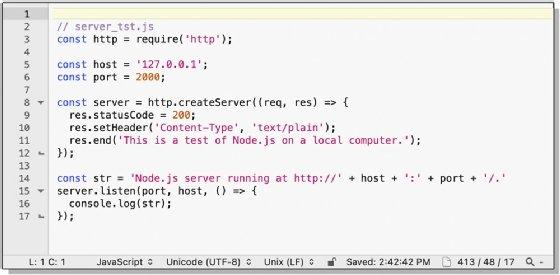How to Build a Simple API Using Node.js and Express
In today’s digital world, APIs (Application Programming Interfaces) are crucial for enabling communication between different software applications. With the rise of web development, particularly using JavaScript, building APIs with Node.js and Express has become increasingly popular. This article provides a comprehensive guide on how to build a simple API using Node.js and Express, along with practical tips and best practices.
What is Node.js?
Node.js is an open-source, cross-platform JavaScript runtime environment that executes JavaScript code outside of a web browser. It allows developers to build scalable server-side applications using JavaScript.
What is Express?
Express is a minimal and flexible Node.js web application framework that provides a robust set of features for building web and mobile applications. It simplifies the server creation process and is widely used for developing APIs.
Why Use Node.js and Express for Building APIs?
- Performance: Node.js is non-blocking and event-driven, making it efficient for handling multiple requests simultaneously.
- JavaScript Everywhere: With Node.js, developers can use JavaScript on both the client and server sides.
- Rich Ecosystem: The Node package manager (npm) provides access to numerous pre-built libraries and modules.
- Simplicity: Express allows for quick setup and easy routing, essential for building RESTful APIs.
Setting Up Your Environment
Before we start coding, ensure that you have Node.js and npm installed on your machine. You can download them from Node.js Official Site.
Step 1: Initialize Your Project
mkdir my-simple-api
cd my-simple-api
npm init -y
This command will create a new directory and initialize a new Node.js project, creating a package.json file.
Step 2: Install Express
Use npm to install Express.
npm install express
Step 3: Create the Server
Create a file named server.js and add the following code:
const express = require('express');
const app = express();
const PORT = process.env.PORT || 3000;
// Middleware to parse JSON
app.use(express.json());
// Basic route
app.get('/', (req, res) => {
res.send('Welcome to My Simple API!');
});
// Start the server
app.listen(PORT, () => {
console.log(`Server is running on port ${PORT}`);
});
This code initializes an Express application and sets up a basic route that responds to GET requests at the root URL.
Step 4: Adding API Endpoints
Next, we’ll create some API endpoints to handle CRUD (Create, Read, Update, Delete) operations. Let’s store data in-memory for simplicity.
let users = []; // In-memory array to store user data
// Create a new user (POST)
app.post('/users', (req, res) => {
const user = req.body;
users.push(user);
res.status(201).json(user);
});
// Get all users (GET)
app.get('/users', (req, res) => {
res.json(users);
});
// Get a user by ID (GET)
app.get('/users/:id', (req, res) => {
const user = users.find(u => u.id === parseInt(req.params.id));
if (!user) return res.status(404).send('User not found');
res.json(user);
});
// Update user (PUT)
app.put('/users/:id', (req, res) => {
const user = users.find(u => u.id === parseInt(req.params.id));
if (!user) return res.status(404).send('User not found');
const updatedUser = req.body;
Object.assign(user, updatedUser);
res.json(user);
});
// Delete user (DELETE)
app.delete('/users/:id', (req, res) => {
users = users.filter(u => u.id !== parseInt(req.params.id));
res.status(204).send();
});
In the code above, we added CRUD operations for managing user data with endpoints for creating, reading, updating, and deleting users.
Step 5: Testing Your API
Once everything is set up, you can test your API using tools like Postman or CURL. Here’s a summary of your endpoints:
| Method | Endpoint | Description |
|---|---|---|
| POST | /users | Create a new user |
| GET | /users | Retrieve all users |
| GET | /users/:id | Retrieve user by ID |
| PUT | /users/:id | Update user by ID |
| DELETE | /users/:id | Delete user by ID |
Benefits of Building Your Own API
- Customization: Tailor the API to the specific needs of your application.
- Better Control: Have full control over your data and how it’s accessed.
- Learning Opportunity: Gain practical experience with RESTful API development, enhancing your skills.
Best Practices for API Development
- Use clear and consistent naming conventions for endpoints.
- Version your API for better maintenance (e.g., /v1/users).
- Implement error handling to provide meaningful error messages.
- Secure your API with authentication and authorization methods.
Conclusion
Building a simple API with Node.js and Express is an excellent way to understand backend development and API management. This guide provided step-by-step instructions on setting up a basic RESTful API, along with essential tips and best practices. With this knowledge, you can further explore more advanced functionalities, implement security measures, and ultimately build robust applications.
As you continue your journey with Node.js, experimenting with different frameworks and libraries will expand your capabilities as a developer. Happy coding!









